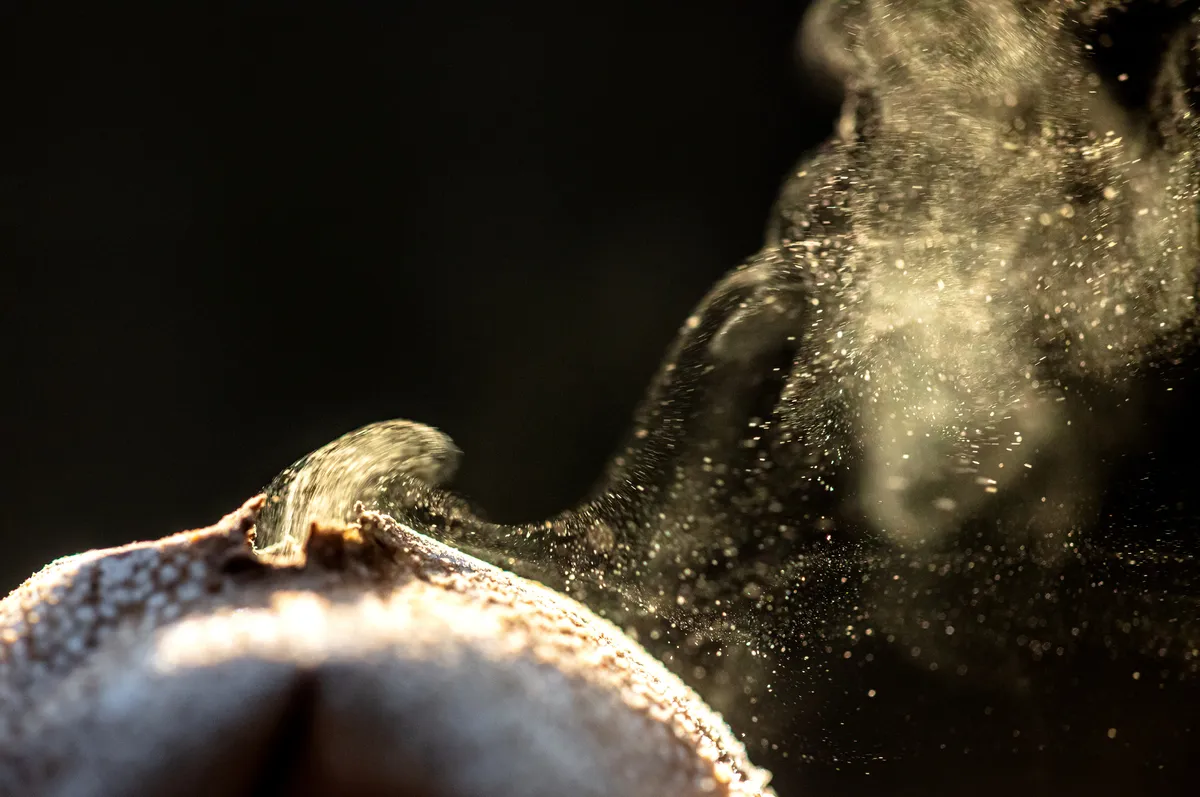Cycling through a woodland one Sunday evening in early June, I was brought to a shuddering halt by the sight of a large creamy coloured mushroom the size of a dinner plate that had recently sprouted from a tree stump like an alien flower. Just a week later, passing along the same track, I found that the mushroom had collapsed in on itself like a badly cooked soufflé.
Fungi are startlingly different from other life forms on Earth – something that Merlin Sheldrake noticed early in life. His childhood curiosity was piqued by these bizarre, largely invisible organisms that seemed to have so much power to transform one thing into another. “They appear very fast, and then they vanish again,” he says. “There’s a mystery to them – where do they come from, where are they going?”
Merlin is now a biologist specialising in fungi, and his book Entangled Life, along with his movie Fungi: Web of Life (narrated by Björk), brilliantly explain this and other astonishing properties of fungi – and their astounding importance to other life forms on our planet.
Fungi: the basics
Let’s explore some basics. Mushrooms are merely the fruiting bodies of fungi, like apples are to an apple tree. However, most fungi don’t produce mushrooms to reproduce; the vast majority simply release spores into their environment to create the next generation.
Fungi form their own biological kingdom – they are neither plants nor animals, though in evolutionary terms they are probably closer to animals.
It’s a vast taxonomic group, with an estimated 2.2 to 3.8 million different species, of which only 6% have been described. Fungi are everywhere.
Yeast is a fungus. So is Tinea pedis – athlete’s foot. Unlike plants, fungi cannot make their own food through photosynthesis, so they have to eat. With so many millions of different species, they have a range of ways of doing this, but they are perhaps best known for breaking down dead things. They make things rot, in other words. “Decomposition seemed miraculous to me,” says Merlin. “And still does, actually.”
Many fungi don’t have to break down dead plant or tree material to eat. “There are so many ways to be a fungus,” Merlin explains. “There are specialist moulds that thrive on fumes that evaporate from whisky barrels, and there’s a kerosene fungus that lives in the fuel tanks of aircraft. They have many different appetites and proclivities.”

Intelligent life?
If it sounds as if Merlin believes fungi are self-determining organisms, then that’s because he does. As he explains in Entangled Life, you don’t need a brain to be smart. Many “sophisticated, problem-solving behaviours have evolved in organisms outside the animal kingdom”, with the best-known being slime moulds, which – confusingly – are not actually moulds (and therefore fungi), but amoeba.
There’s a classic experiment, recounted in Merlin’s book, where researchers released a slime mould into a petri dish modelled on Greater Tokyo. Bright lights – which slime moulds avoid – representing hills and other obstacles were put into the dish, along with oat flakes to act as the major urban hubs. “After a day, the slime mould had found the most efficient route between the oats, emanating into a network almost identical to Tokyo’s existing rail network,” Merlin writes.
They seem to be everywhere at once and nowhere in particular.
Fungi can do something similar. Many fungi species exist largely as a network of cobweb-like structures called mycelia, which exist to access nutrients underground. They form commensal relationships with plant roots – that is, they receive food from the roots in the form of the sugars created from photosynthesis, while in return they give back nutrients, such as nitrogen and phosphorus, that the plants would otherwise find it harder to obtain. Nine out of 10 plants depend on fungi for their existence.
“Researchers have put fungi in microscopic mazes and watched them find their way around,” Merlin says. It makes sense, he adds. They live in these “cluttered obstacle courses” of the soil, and they have to monitor the variable conditions experienced by different parts of their sprawling networks and choose the appropriate course of action. As animals with central processing units (our brains), we find it hard to understand that fungi can successfully integrate these data streams without one. “They seem to be everywhere at once and nowhere in particular,” Merlin says.
Beware destroying angels
Most of us know fungi first and foremost as a source of food. Button mushrooms – Agaricus bisporus (Merlin tends to give the scientific name of every species he mentions) – are “comparatively dull and uninteresting”, so of those cultivated here he recommends oyster, lion’s mane and maitake (also known as hen of the woods) mushrooms.
He is reluctant to recommend wild ones – there are too many nasty surprises waiting for anyone who goes foraging in the woods without the requisite knowledge. “There are a number of species that will kill you,” Merlin points out. “The death cap, Amanita phalloides, and the destroying angel, Amanita virosa, are two well-known species that grow in the UK. You need to know your stuff. And if you are going to pick mushrooms to eat, it’s very important to make a positive identification, and not just say to yourself, ‘It’s not that and it’s not that, so it must be that’.”
After years of debate, scientists have concluded that giant, 8m-tall fossilised structures known as prototaxites, which lived more than 450 million years ago, were almost certainly fungi.
And while on the subject of toxic mushrooms, I venture to ask (with some trepidation, as I have a feeling I’m stepping into a scientific or perhaps linguistic booby trap), what the difference between a mushroom and a toadstool is. “Toadstool is not a technical term,” he tells me. “Historically, it was sometimes used to distinguish between those you can and can’t eat – toadstools being the poisonous ones.” But there is something of interest here, nonetheless. “In a lot of cultures, there are associations between the words for toads and mushrooms, but I haven’t heard a good scientific explanation as to why this is.”
Merlin has never had any serious poisoning problems, himself. There were some slippery jacks that gave him a bit of stomach ache, but that’s a possible side effect with that species. “They are not particularly delicious, it was more of an experiment,” he says.
As well as being a crucial element in allowing plants – and therefore animals – to survive, fungi probably allowed marine algae to conquer dry land in the first place. After years of debate, scientists have concluded that giant, 8m-tall fossilised structures known as prototaxites, which lived more than 450 million years ago, were almost certainly fungi.
Potent medicine
Mushrooms are not just a source of food, but also of medicine. An anti-cancer drug called Taxol was developed from the Pacific yew tree, but it was only some years later that researchers realised that it wasn’t the plant producing the drug, but a fungus that lived within it.
“A lot of fungi are under research,” says Merlin. “Turkey tail has given rise to pharmaceutical drugs to treat cancer in Japan, but they have not been licensed in Europe. Lion’s mane has been shown to have neuro-regenerative properties, but there have been very limited human clinical trials, because it’s so expensive and because you can’t patent natural molecules,” he adds.
If Merlin had to pick a favourite mushroom (and I get the impression he really doesn’t want to), then he mentions the beefsteak, a red slimy bracket fungus that grows on trees. It is, he points out, a very subjective thing. Mushrooms in the Amonita genus, such as the beautiful, classic red-and-white-spotted fly agaric, are very striking, he concedes.
If mushrooms – well, fungi – are starting to seem a little more magical through the prism of the Sheldrake mind, don’t be surprised – he is called Merlin, after all.

